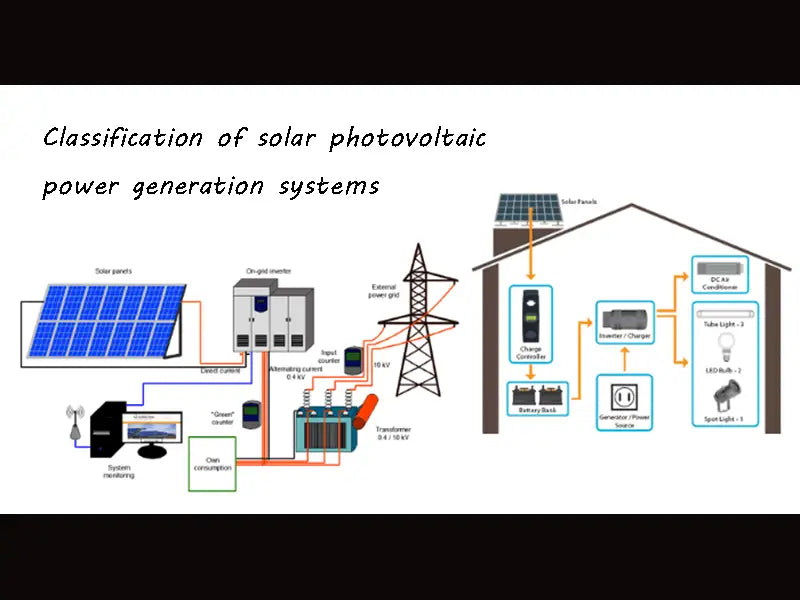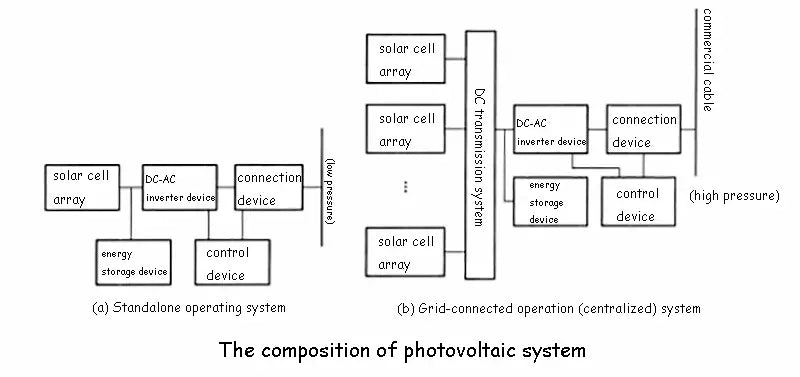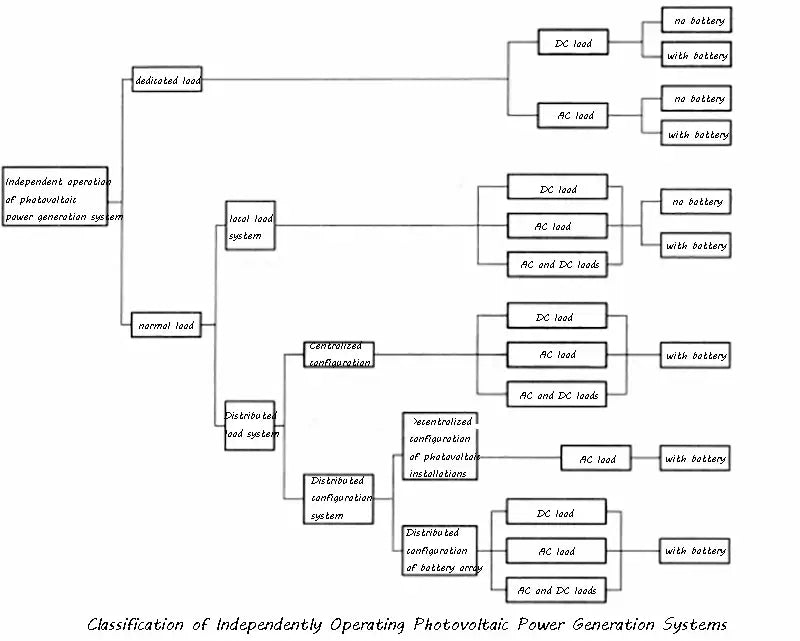
Main content:
Photovoltaic power generation system, that is, solar cell application system, is generally divided into two categories: independent operation photovoltaic power generation system and grid-connected photovoltaic power generation system. The independent operating photovoltaic power generation system is shown in the figure (a) below, which consists of a solar battery array, an energy storage device, a DC-AC inverter device, a control device and a connection device. The grid-connected photovoltaic power generation system is shown in Figure (b).

The so-called independent operating photovoltaic power generation system refers to a closed system that does not have any relationship with the power system. It is often used as a power source for portable devices, to power areas or devices that are far from the existing grid, and for any power supply that is not connected to the grid. The composition of a stand-alone photovoltaic power generation system varies according to its use and the environment of the equipment site. The figure below shows the compositional classification of a stand-alone photovoltaic power generation system.

1. Photovoltaic power generation system with dedicated load
A photovoltaic power generation system with a dedicated load may be constructed and designed only according to the requirements of its load. Therefore, the output power is DC, or AC at any frequency, which is more suitable. It is technically feasible to operate such a system using variable frequency speed regulation. For example, in the case of motor load, starting by variable frequency can suppress the impulse current, and at the same time can make the inverter miniaturized.
2. Photovoltaic power generation system with general load

A photovoltaic power generation system with a general load is a power supply system that targets an unspecified load within a certain range. As a load, it is usually an electrical product, and it is more convenient to run at power frequency. In the case of DC loads, the inverter can be omitted. Of course, the actual situation may be both AC and DC loads. Generally, a battery energy storage device is required to store the electricity generated by the solar panel during the day in the battery for use at night or in rainy days. If the load is only agricultural machinery, the battery can also be omitted. The general load can use photovoltaic power generation system, which can also be divided into on-site load photovoltaic power generation system and separate load photovoltaic power generation system. The former is used as a power source for households or certain equipment in remote areas, and is a photovoltaic power generation system that generates electricity and uses electricity locally at the site of use. The latter requires small-scale distribution lines to supply power to loads outside the location of the photovoltaic power plant. For the composition of this photovoltaic power generation system, a centralized photovoltaic field can be set up to facilitate management. If it is difficult to build a centralized photovoltaic field on the land, it is also possible to disperse multiple unit photovoltaic fields along the distribution line. The grid-connected photovoltaic power generation system shown in the figure below is actually the same as other types of power stations. The electrical system provides electrical energy. It can be seen from the figure that there are two types of grid-connected photovoltaic power generation systems: centralized photovoltaic power station well network and rooftop photovoltaic system network. The former power capacity is usually above the megawatt level, and the latter is between the kilowatt level and the 100 kilowatt level. The modular structure of the photovoltaic power generation system is suitable for the development of this distributed power supply method.
Read more: The principle and composition of solar photovoltaic power generation